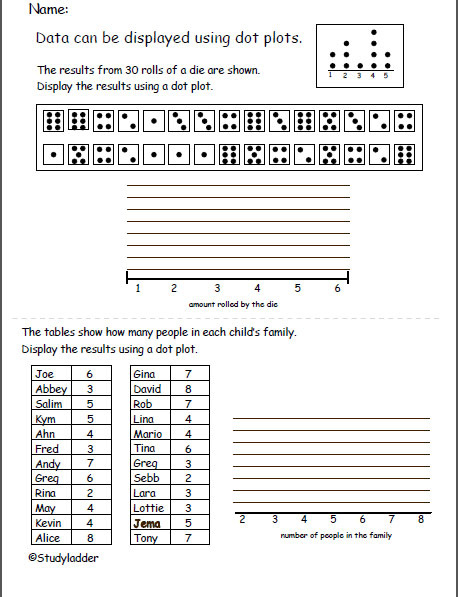Display data using dot plots
- Grade: All grades
Activity type: Printable
To save results or sets tasks for your students you need to be logged in. Join Now, Free
Display data using dot plots
- Course
Mathematics - Grade
n.a. - Section
Printable Worksheets - Outcome
Data - Activity Type
Printable - Activity ID
22291

